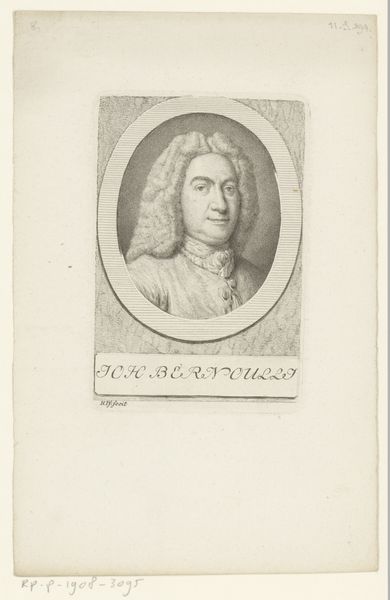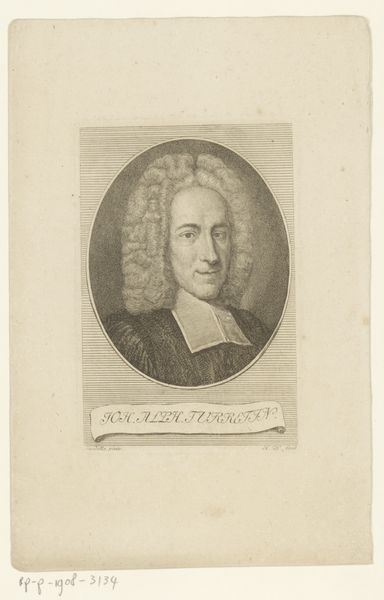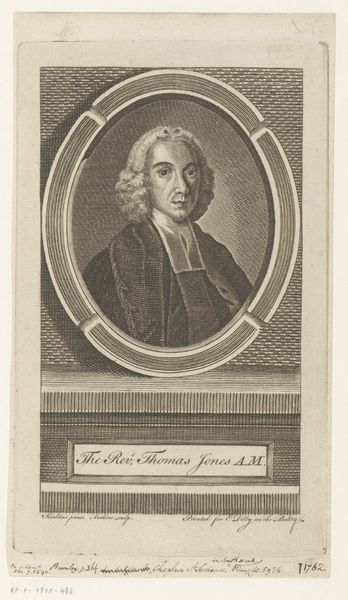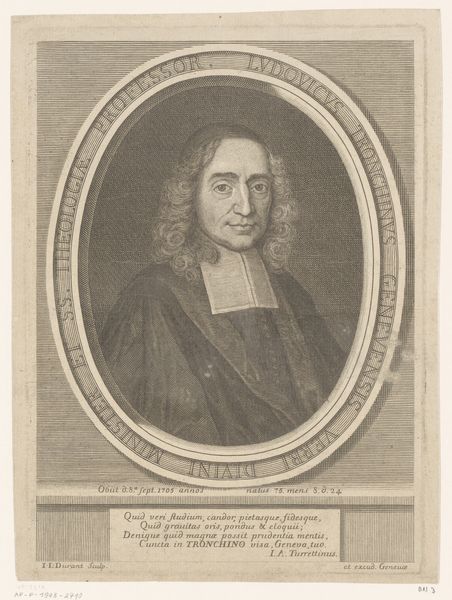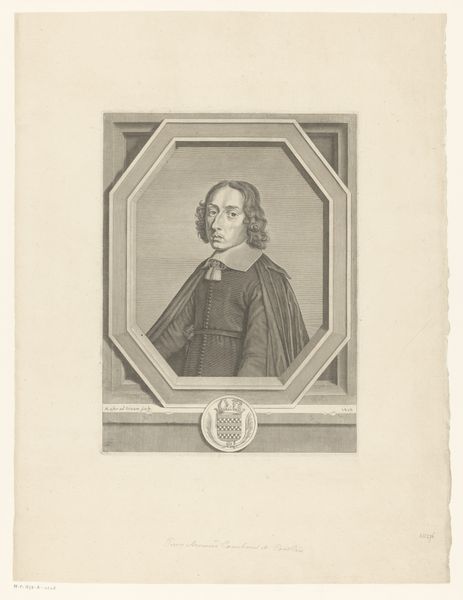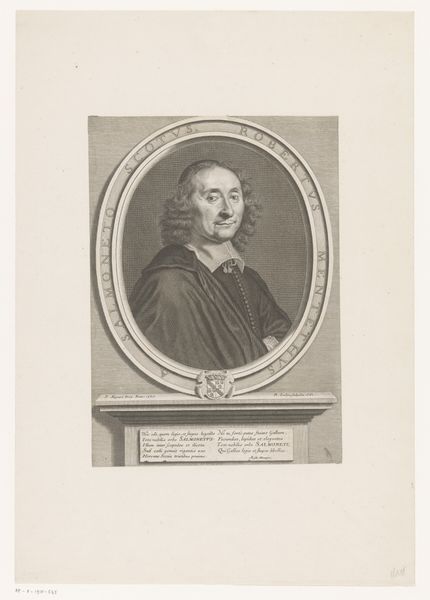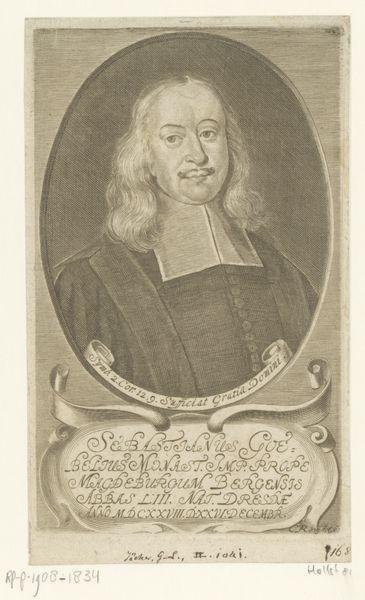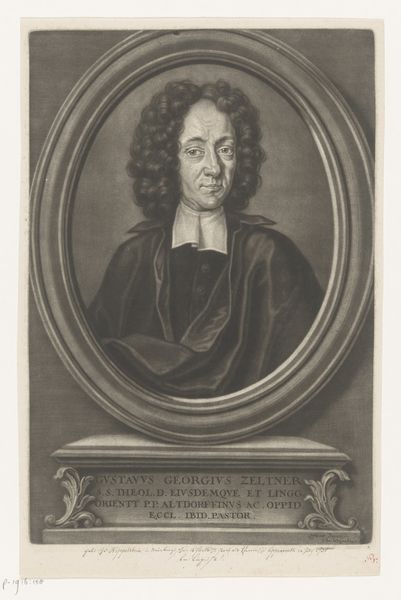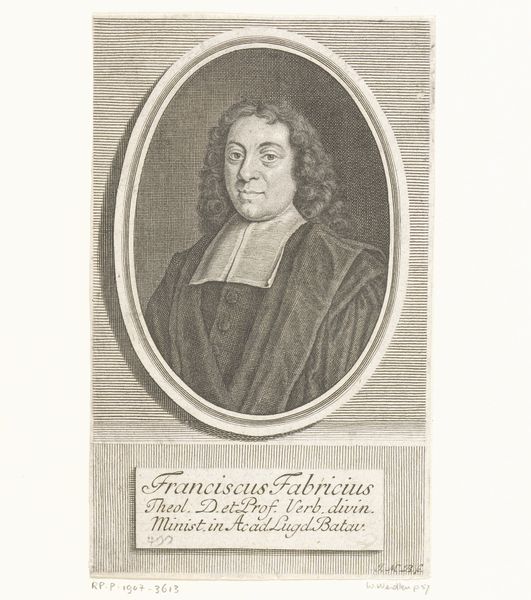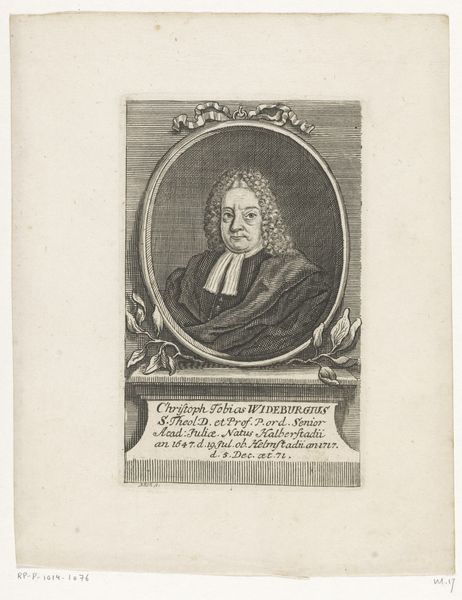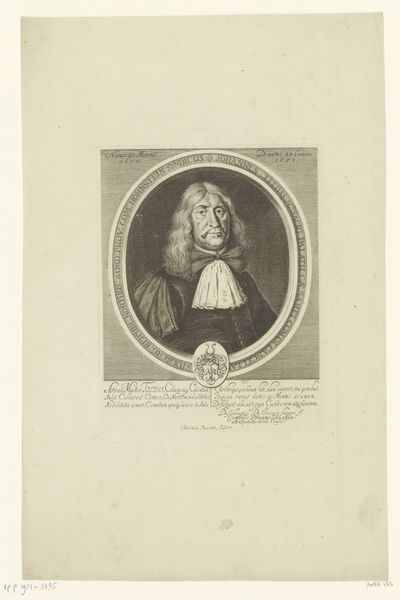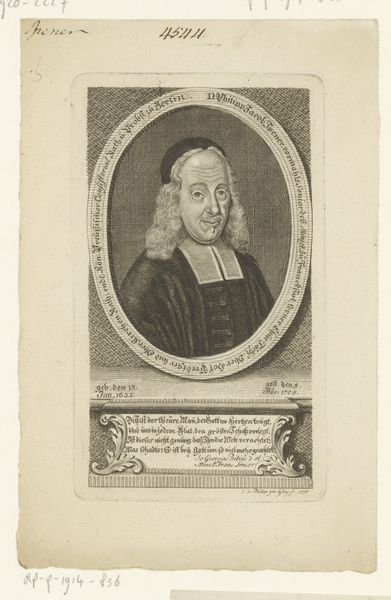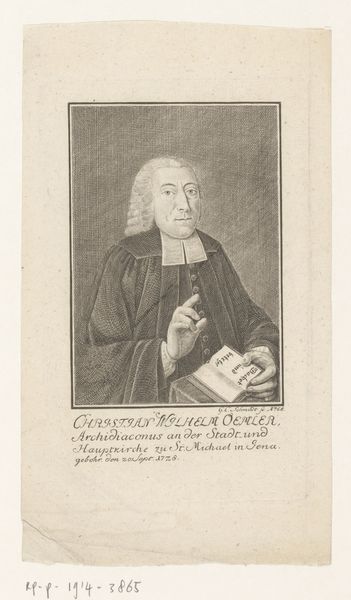
Dimensions: height 127 mm, width 89 mm
Copyright: Rijks Museum: Open Domain
This is Heinrich Pfenninger’s portrait of Jean-Frédéric Ostervald, made with etching, a printmaking technique, sometime in the late 18th or early 19th century. The image starts with a metal plate, likely copper, which is coated with a waxy, acid-resistant substance. The artist then scratches away the coating with a needle to expose the metal, and the plate is submerged in acid, which bites into the exposed lines. The longer it's in the acid, the deeper and darker those lines will appear when printed. The fine lines of the etching create subtle tonal gradations, giving a sense of volume and depth to Ostervald's face and wig. The etched lines, born of skilled hand-work, offer a sense of intimacy. And the printmaking process allowed for the reproduction of this image, making it accessible to a wider audience – a fascinating parallel to Ostervald’s own desire to make religious texts more widely available. So, next time you look at a print, think about the materials, the making, and the context. It’s a great way to connect with creative practices beyond fine art.
Comments
No comments
Be the first to comment and join the conversation on the ultimate creative platform.
